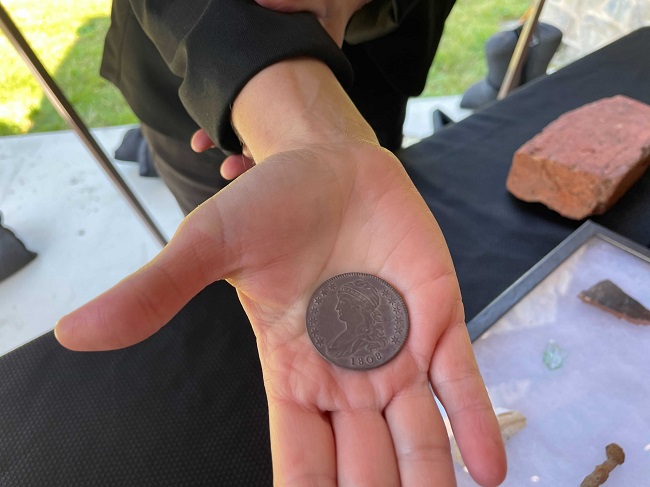Historians have been looking for the house in Maryland where Harriet Tubman was raised before she fled from slavery for for two decades.
State and federal officials reported on Tuesday that they believe they have identified the ruins of Tubman’s previous home, thanks in large part to the efforts of Julie M. Schablitsky, the chief archaeologist at the Maryland Department of Transportation State Highway Administration.

Schablitsky had been searching since the fall across the swampy landscape of Dorchester County, but on a whim she decided to switch her search area to the side of a lonely road on Maryland’s Eastern Shore.
Here is Where she Started Getting Beeps From her Metal Detector.
Schablitsky was pleased to see the profile of a woman with the word “Liberty” written across her cap after scraping the mud and grime off a coin. As for the year, it was written at the bottom as 1808.
‘When I looked at the date, I couldn’t believe it,’ Schablitsky told the Washington Post. It was a lightbulb moment, for sure.
After finding the coin, Schablitsky and her team of archaeologists knew they were in the right place at the right time. The remnants of a house were discovered about a quarter of a mile from where the coin was discovered.
Pieces of Brick, Nails, and Ceramics Started to Surface as the Team Continued to Excavate the Area.
She informed the Post that the pieces of the puzzle were finally in place after putting together the documents, the location, and the items. There is more than one artefact indicating that we have something of value. In this case, the term “assemblage” is appropriate. It consists of a large number of individual parts.
Tubman was born Araminta “Minty” Ross, the ninth of a total of nine children, between the years between 1820 and 1822. She was born to enslaved parents, Benjamin Ross and Harriet “Rit” Green.
Five years after his previous owner Anthony Thompson’s death in 1836, Tubman’s father was manumitted, or emancipated from slavery, and given 10 acres of land.
Ross rescued his wife and children by purchasing land in the area that is now the Blackwater National Wildlife Refuge, which is controlled by the federal government.
Last Words
Harriet Tubman “self-liberated” herself and “arrived in Philadelphia unhurt,” to quote historian Catherine Clinton. From there, she began her “illustrious career” on the Underground Railroad. By many accounts, both historical and fictional, Tubman deserves to be called the “Great Emancipator” for her role in helping hundreds of African Americans to freedom, frequently by way of Canada.
For a period of 10 years, Tubman made 13 trips into the South, bringing 70 slaves to freedom.


















